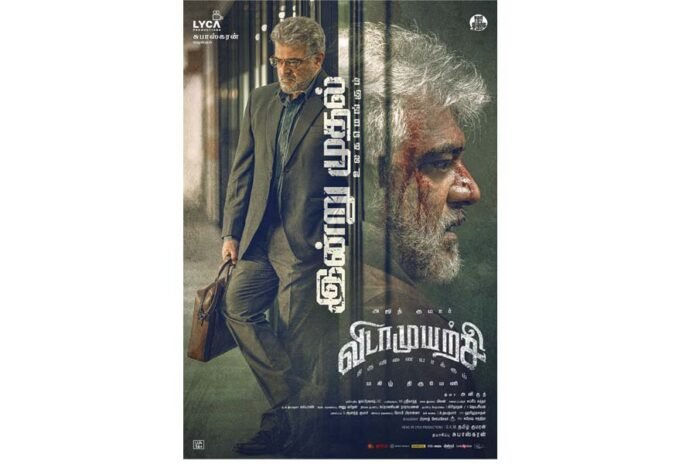A Bold Departure from Tamil Superstar Tropes
Vidaamuyarchi opens with a long shot of Arjun (Ajith Kumar) casually exiting his home in Azerbaijan, carrying a bag. The scene is devoid of typical Tamil superstar film elements—no slow-motion, no dramatic close-up, and no Anirudh Ravichander’s signature ‘mass’ background score. The entire sequence unfolds in a matter-of-fact tone, signaling director Magizh Thirumeni and Ajith Kumar’s deliberate departure from conventional superstar film gimmicks.
A Story-Driven Narrative Without Fan Service
Within minutes, it becomes evident that Vidaamuyarchi is a story-driven film where the protagonist embraces a subdued white-collar role, which may challenge fan expectations. The film makes a bold statement: there will be no overt fan service. For Tamil cinema viewers overwhelmed by a barrage of Rockies, Pushpas, Jailers, and Beasts, this shift is refreshing. The mere act of avoiding cliches is often lauded in Tamil cinema, highlighting the industry’s current state.
A Deeply Layered Relationship Drama
The film begins with Kayal (Trisha) confessing her affair to her husband, Arjun. A juxtaposition of their past romantic moments with their present struggles paints a vivid picture of a love that has withered. One standout scene features Kayal pointing out how Arjun has failed to notice the decline of their romance—an emotionally charged moment. However, Magizh Thirumeni lingers too long on redundant scenes, establishing their fractured marriage when a single scene would have sufficed. The narrative gains momentum when the couple embarks on ‘one last trip’ before parting ways, traveling from Azerbaijan to Tbilisi through desolate landscapes. Apart from this prologue, Vidaamuyarchi mirrors the Hollywood film Breakdown (1997), centering around a man’s desperate fight to save his partner from a notorious gang.
A Predictable but Engaging Thriller
Despite its predictability, Vidaamuyarchi remains engaging, thanks to Magizh Thirumeni’s masterful storytelling. The intrigue lies more in how the story is told rather than the story itself. While adhering to survival thriller tropes, the film incorporates well-crafted twists that, while not shocking, remain compelling. The action set pieces elevate the experience, particularly a gripping fight sequence inside a moving car that keeps viewers on edge. The top-angle cinematography of a pivotal fight sequence is a standout moment. However, the film’s clinical execution sometimes makes it feel overly polished, bordering on artificial.
Ajith Kumar’s Vulnerability: A Bold Experiment
Ajith Kumar’s portrayal of vulnerability in Vidaamuyarchi evokes comparisons to Daniel Craig’s Casino Royale, where James Bond was suddenly seen taking relentless blows. Similarly, Ajith—often the epitome of suave in Kollywood—gets battered throughout the film. A bar scene exemplifies this shift, where Arjun becomes the target of a cruel prank, leaving him humiliated. This transformation suggests Ajith’s willingness to break the traditional superstar mold. He no longer panders to fan expectations; instead, he challenges them to accept his evolving artistic vision.
Supporting Cast Steals the Spotlight
In Vidaamuyarchi, Ajith Kumar seamlessly integrates into the narrative rather than overshadowing it. Regina Cassandra and Arjun (the actor) command attention as Deepika and Rakshith, earning comparisons to Harley Quinn and Joker. Their characters are fleshed out with an extended origin flashback, while Arjun (Ajith’s character) remains somewhat underdeveloped. His resilience, street smarts, and vulnerabilities are well-explored, but his sudden combat skills lack explanation. Additionally, his unwavering moral compass deprives the audience of a cathartic vengeance arc. Like Batman, he refuses to kill, ensuring his heroism remains untarnished.
A Refreshing Take on Tamil Cinema’s Superstar Formula
Ultimately, Vidaamuyarchi presents a leading man who strives to walk and talk like an ordinary person, adheres to principles, and avoids pandering to mass expectations. Ajith Kumar’s decision to break free from the repetitive feedback loop of commercial cinema is a commendable experiment—one that challenges both himself and his audience.


